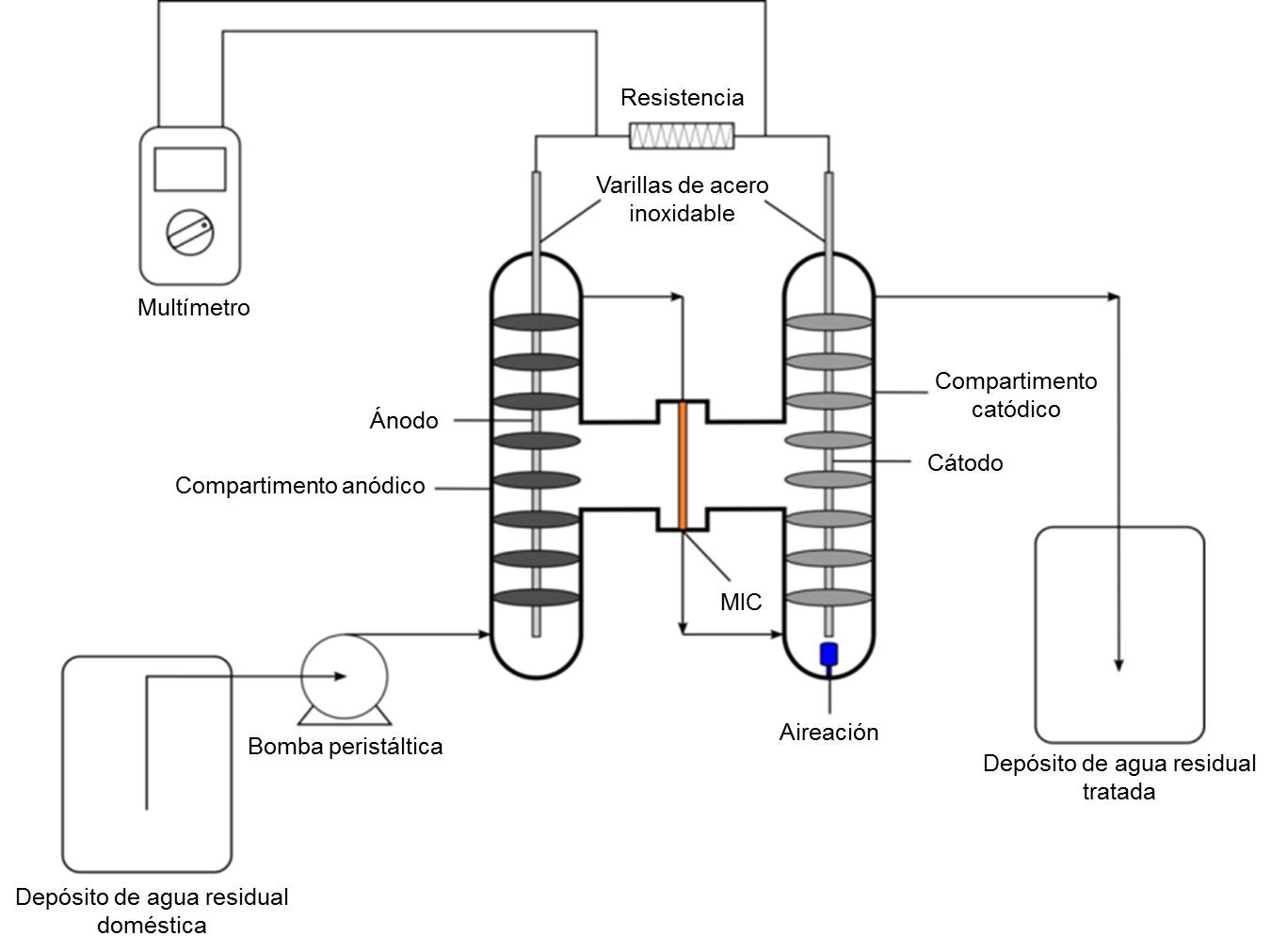 |
|
The objective of the present work was to evaluate at different hydraulic retention times (HRT) the removal of organic matter and the voltage generated during municipal wastewater treatment process, using a sequential anaerobic-aerobic (anode/cathode) semi-pilot scale microbial fuel cell (12 L) using composites of polyurethane foam/graphite/polypyrrole (PU/Graphite/PPy) and polyurethane foam/graphite (PU/Graphite) as anode and cathode, respectively. It was observed that, the highest removal efficiencies of COD (91.8%), BOD5 (90.6%), total solids (27.8%), helminth eggs (95.9%) and fecal coliforms (99.9%), were achieved at a HRT of 72 H. However, the electrical energy production in the system (0.0932 V, 1.42×10-5 A, 0.2202 mW/m3) decreased considerably by reducing the volumetric flow rate of the influent, which prevented the correct transport of the substrate to the active parts of the microbial biofilm, thus increasing the internal resistance of the system (6.57 kΩ). The coulombic efficiency of the bioelectrochemical system was 0.0067%. The results demonstrate the technical feasibility of using sequential bioelectrochemical systems as an alternative in the treatment of wastewater.
Keywords: wastewater treatment, bioelectrochemical system, microbial fuel cell, polyurethane, graphite, polypyrrole, hydraulic retention time.
|
|
 |

